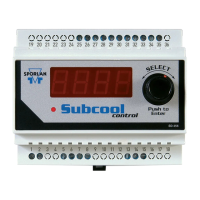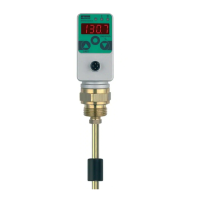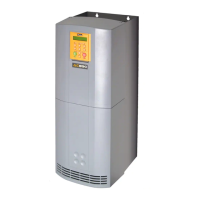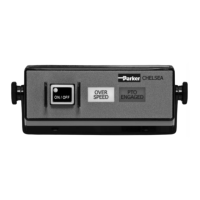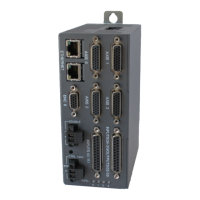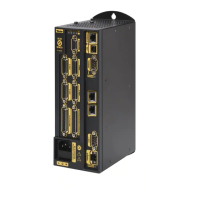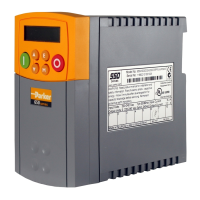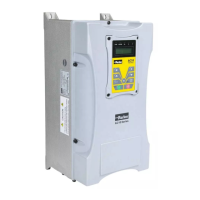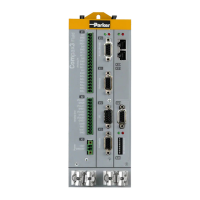Page 116 – Bulletin 100-50-9.1
17.2.3 DRIP CYCLE
Upon defrost termination, the S3C will go into a drip cycle
mode for applications that require the fans to be off during
defrost. Refrigeration, fans and defrost mechanism will
remain off until Defrost Coil Drain Time, dd, is met. A
drip cycle allows the moisture to naturally drip off of the
evaporator and into the case tub.
By setting Defrost Coil Drain Time, dd, to 0 minutes, the
system will skip drip cycle mode and go immediately into
Fan Delay mode.
17.2.4 FAN OPERATION/DELAY
If evaporator fans are configured to be off during defrost,
operation will resume when either the Fan Delay
Temperature, fd, is reached or when the Fan Delay Time,
fde, has elapsed. Fan delay temperature is read from the
Coil Outlet sensor. If no Coil Outlet sensor is present, then
the Fan Delay Time will be the sole source for determining
when the evaporator fans will resume operation. The fan
delay allows any residual moisture droplets to freeze before
the evaporator fans are turned on. This minimizes water
droplets being blown into the air stream and may reduce
excess humidity in the case.
By setting Fan Delay Time, d, to 0 minutes, the system
will skip fan delay mode and go immediately back into
refrigeration upon defrost termination.
17.2.5 TERMINATION SYNCHRONIZATION
The S3C Case Control case – case network allows for the
synchronization of termination of the defrost cycle and
the resumption of cooling mode. Line-up (Defrost Group)
refrigeration will not be initiated until all controllers in the line-
up (Defrost Group) have terminated their defrost cycle. For
cases with multiple evaporators, each evaporator must reach
termination temperature or the fail-safe time has elapsed
before the case is considered defrosted. Controllers with the
same d setting are part of the same Defrost Group.
17.2.6 SCHEDULE
The defrost schedule for each case or group of cases in the
supermarket will be typically coordinated by the Building
Automation System. The defrost schedule determines the
time each defrost will be initiated. Additionally, a defrost
cycle can be initiated on an ad hoc basis by the BAS via
communication or activation of a digital input. The case
controller will respond to each request to enter defrost and
will manage the defrost mechanism and defrost termination.
Termination of defrost is based on the requirements of
an individual evaporator. Resumption of refrigeration is
coordinated on a line-up level and occurs only when defrost
has terminated on all evaporators within the line-up.
The S3C Case Control system has a real time clock (RTC) that
allows for supporting an internal defrost schedule that can
be used when defrost coordination by a BAS is not available.
The internal defrost schedule serves as a backup in the event
communication with the BAS is lost or as the primary defrost
initiation mechanism in the absence of a BAS. The internal
defrost schedule will take the form of a daily simple schedule,
a daily custom schedule, or a weekly custom schedule.
17.2.7 AIR DEFROST
Air defrost is accomplished by stopping the flow of
refrigerant to the evaporator while leaving the evaporator
fans on. The S3C Case Controller will stop the flow of
refrigerant via a connected liquid line or suction stop
solenoid, closing of an attached Electronic Expansion
Valve (EEV), closing of an attached Electronic Evaporator
Pressure Regulator (EEPR) or any combination thereof.
Refrigeration will remain off until the selected temperature
input (Discharge Air, Defrost Termination) sensor reaches
the defrost termination temperature set point or the defrost
duration limit is reached. When resuming refrigeration,
the Solenoid and EEV open while leaving the fans off. The
fans are turned on when the coil temperature reaches the
fan delay temperature or the maximum fan delay time is
reached. The fan delay allows any remaining liquid to re-
freeze prior to turning on the evaporator fans.
17.2.8 ELECTRIC DEFROST
Electric Defrost uses an electric heater to defrost the
evaporator. The S3C Case Controller will stop the flow
of refrigerant via a connected liquid line or suction stop
solenoid, closing of an attached Electronic Expansion
Valve (EEV), closing of an attached Electronic Evaporator
Pressure Regulator (EEPR) or any combination thereof. It
controls evaporator fans in accordance with configuration
of the Fans On During Defrost parameter, and energizes the
electric heaters. The heaters will remain on until the defrost
termination temperature is reached or the maximum
defrost time limit is reached. A user programmed drain
time delay after de-energizing the heaters allows water
to drip off the coil and exit the case via the drain before
resuming refrigeration. When resuming refrigeration, the
Solenoid and EEV open while leaving the fans off. The
fans are turned on when the coil temperature reaches the
fan delay temperature or the maximum fan delay time is
reached. The fan delay allows any remaining liquid to re-
freeze prior to turning on the evaporator fans.
17.2.9 HOT GAS DEFROST
To control hot gas defrost, the controller will close the
suction line (CDS or solenoid) after closing the liquid line
(solenoid and/or EEV) to stop the flow of refrigerant. A
programmable delay time between stopping refrigerant
flow and closing of the EEPR allows for pumping refrigerant
out of the refrigeration circuit (case line-up) to be defrosted.
If a suction solenoid is used it will be connected to the
defrost relay on the opposite contact from the hot gas bypass
valve. With both connected to the same SPDT relay one will
always be energized while the other is de-energized and
they will switch at the same time. With the EEV and liquid
line solenoid closed the system employs a check valve to
allow the hot gas to enter the Liquid Header. The controller
will open the defrost solenoid and the hot gas will flow from
the coil outlet to the coil inlet (reverse normal direction of
refrigerant) and the hot gas will enter the liquid header. If a
liquid line solenoid with internal check is used the solenoid
must remain open for hot gas to flow through the coil.
The case will remain in defrost until the defrost termination
temperature is reached or the maximum defrost time limit
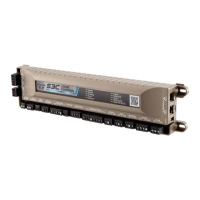
